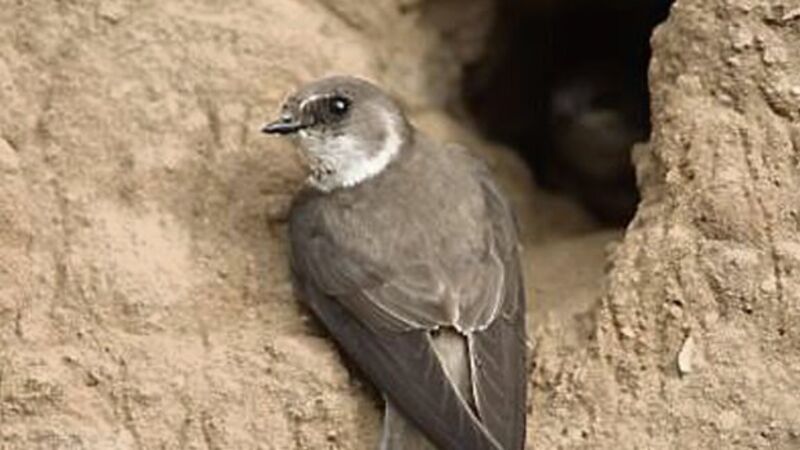Sandy home for martins

The quarry was abandoned a long time ago and sand and gravel now comes in lorries from far afield. At least, it was abandoned by human beings but a colony of sand martins took over. They bored their nesting tunnels, some of which can be over a metre long, into the vertical face of the pit, choosing the strata with bands of easy-to-excavate sand rather than the coarser gravel. And, during the day, they fly out over the 10-acre meadow catching insects on the wing.
The sand martin has two Irish relatives, the house martin and the swallow (swifts are not related) and it is the smallest of the three. It also has a shallower fork to its tail and is a bit stubbier in appearance. This gives it a different flight pattern, more abrupt than a swallow with less of the flowing loops and arabesques.














